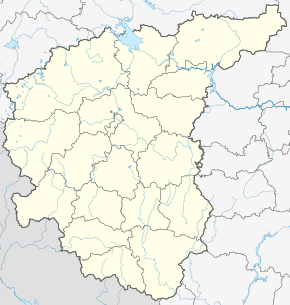
Back Goue Ring van Rusland Afrikaans طوق روسيا الذهبي Arabic Aniellu d'Oru de Rusia AST Rusiyanın qızıl halqası Azerbaijani Залатое кальцо Расіі Byelorussian Залатое кальцо Расеі BE-X-OLD Златен пръстен на Русия Bulgarian Anell d'Or de Rússia Catalan Zlatý kruh Ruska Czech Ылтăн çĕрĕ CV
You can help expand this article with text translated from the corresponding article in Russian. (January 2019) Click [show] for important translation instructions.
|
The Golden Ring of Russia (Russian: Золотое кольцо России, romanized: Zolotoye koltso Rossii) unites old Russian cities of five Oblasts – usually excluding Moscow – as a well-known theme-route. The grouping is centred northeast of the capital in what was the north-eastern part of ancient Rus'.[1] The ring formerly comprised the region known as Zalesye. The idea of the route and the term was created in 1967 by Soviet historian and essayist Yuri Bychkov, who published in Sovetskaya Kultura in November–December 1967 a series of essays on the cities under the heading: "Golden Ring".[2] Bychkov was one of the founders of ВООПИК: the All-Russian Society for the Protection of Monuments of History and Culture (these letters in Romanized form are VOOPIK).[3]
These ancient towns were heavily formative to the centrality of the Russian Orthodox Church in society. They preserve the memory of key events in medieval and Imperial Russian history. The towns have been called "open-air museums" and feature unique monuments of Russian architecture of the 12th–18th centuries, including kremlins, monasteries, cathedrals, and churches. These towns are among the most picturesque in Russia and prominently feature Russia's onion domes.
The Golden Ring of Russia includes: Vladimir-Suzdal-Ivanovo-Kostroma-Yaroslavl-Rostov the Great-Pereslavl-Zalessky-Sergiev Posad
- ^ Travellgide
- ^ "От Шаляпина до Конёнкова" (retrieved January 29, 2019)
- ^ Researchgate.net publication VOOPIK: Romanized to: Vserossiiskoe obshchestvo okhrany pamiatnikov istorii i kul'tury
© MMXXIII Rich X Search. We shall prevail. All rights reserved. Rich X Search
